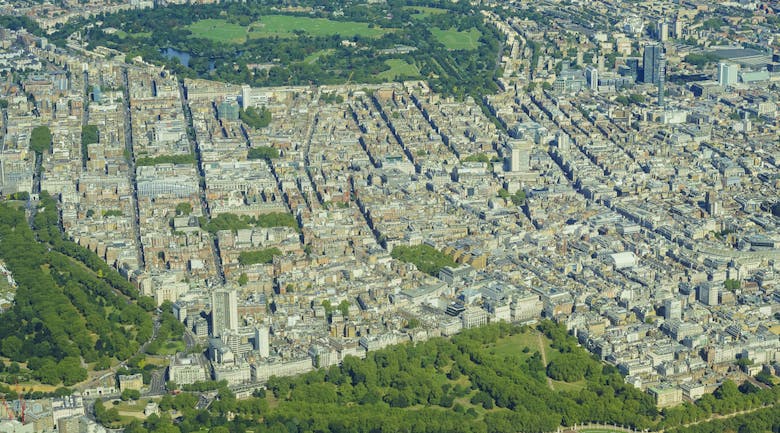A striking new-build home has been given the go-ahead by planners in the Kent Downs Area of Outstanding Natural Beauty, under the highly-prized “Country House Clause”.
Paragraph 79 of the National Planning Policy Framework (Para 55 until a revised version was published earlier this year) allows for “exceptional and innovative” new architecture to go up in locations that would otherwise be no-go zones for residential development.
The new dwelling has been designed by Deal-based Charles Holland Architects, and is located close to a Grade II* listed Manor House – from which it takes some inspiration.
“The new house forms a mannerist inversion of its 17th century neighbour,” says Holland. “The front elevation is informal and vernacular in character and is characterised by an exaggerated catslide roof of peg tiles that comes down almost to the ground. The rear, garden elevation is more vertical in aspect and formal in character. The inverted orientation allows the new house to avoid conflict with its neighbour while offering dramatic views from the interior across the Kent Downs towards the white cliffs.”
Low-key front and side elevations use red brickwork, giving way to more formal white bricks at the front. That white frontage works with the long, low earth-coloured roof to bring the local landscape to mind, while bullseye windows, super-scaled dormers and a triple-stack chimney evoke nearby Kentish domestic architecture.

Landscaping by Louise Hooper Landscape Architects follows similar rules, graduating from informal spaces at the front through a series of “outdoor rooms” to more formal areas at the back. The house is approached via a curving lane through an orchard, before straightening out to set up a view across the site towards the Kent Downs.

The Planning Inspector’s report praised “the exceptional quality of the proposal”, going on to say: “The design has clearly been the subject of a rigorous and scholarly process, and in itself is both outstanding and innovative. Due to its visibility, [it will be] capable of helping to raise the standard of design more generally in the area.”
The design also gained the support of Historic England who wrote: “…the design of the house and its siting within the meadow would enable the house to be a successful addition to the buildings which form the setting of Wallets Court. This fulfils the requirements of paragraph 131 of the NPPF which states that new development should make a positive contribution to local character and distinctiveness.”


Charles Holland Architects was launched in 2016 by Charles Holland, who was previously a Director at influential practice FAT – which worked on projects including Grayson Perry’s A House for Essex. CHA’s other current projects include two new private houses in Holland and Surrey, a public realm scheme next to London Bridge Station, and two exhibition designs.
Charles Holland: “We are absolutely delighted to have been granted planning permission for this house in such a sensitive and beautiful site. Together with the landscape architect, we worked very hard to develop a design that respects its site and is an enjoyable and innovative piece of contemporary architecture in its own right. It can be seen as an homage to the rich history of houses and gardens in the area as well as to wider traditions of domestic architecture. The client has shown great patience and commitment in supporting this approach and we look forward to working with them to realise their house in the coming months.”
Behind the Schemes: Project data & teamsheet
- Location – Kent
- Client – Confidential
- Gross Internal Floor Area – 170 Sq. M
- Architect – Charles Holland Architects (Charles Holland, Daniel Stilwell, Elia Loupasaki)
- Landscape Architect – Louise Hooper, Louise Hooper Landscape Architects
- Planning Consultant – Tim Harbord
- Environmental Engineer – Alan Harries, Integration
- Heritage Consultant – Andrew Derrick, Architecture History Partnership



















